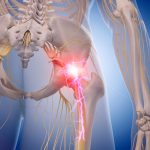Ever find a black & blue on your body and can’t remember how or when it happened?
Injuries sometimes happen this way, a small trauma barley gets your attention at the moment of initial insult, then days later its painful you inspect the area and there is a detectable mark. What happened? Why the delay? Possibly the trauma caused an immediate endorphine release, more likely you were so focused on the task at hand that you didn’t even realize the trauma. Days later the sub dermal bleeding and swelling caused a build up of fluid and pressure that causes a stiffness or fullness with accompanying pain.
Back & neck pain can be caused by many situations that you come across on a daily basis.
Musculoskeletal disorders, termed MSD, are injuries or disorders that occur in the muscles, ligaments, nerves, tendons, joints, cartilage, and spinal discs.
A traumatic MSD is a condition that commonly occurs at work, home, playing sports or in motor vehicle accidents. The severity of these conditions can become more complex by adding insult to injury and not resting-up during the initial healing process.
Most people under stand that pain is a signal of DAMAGE to a body part. Many will rest an injury and hope it heals up on its own. Some people will take over the counter medication like anti inflammatories or pain killers, but are they really helping or harming the situation? When pain and inflammation are reduced it’s possible to “push” oneself and add insult to injury while under the influence of the medication. Multiple insults to an already damaged body part will only increase the time necessary for recuperation and healing. In this high paced world no-one has time to “rest-up” we have responsibilities and need to be mobile. In the long run this can further complicate matters. Medication may be a necessity but it can have consequences. If we interfere with the natural healing process there may be a price to pay down the road. Oftentimes pain is proportionate to damage.
Reinjury is very common and the need for stronger medications has lead to an opioid epidemic in this country. Logic should dictate that if you are numb to pain the risk is that you will injure yourself unwittingly. I have seen patients burn themselves on the stove or with hot items because they didn’t realize that their hand was on a burning hot surface. When their back pain is reduced by medicine they may bend wrong and re-tear damaged ligaments. Injure a part enough and the damaged fragmented parts might need surgical debridement. This is more common than one would think. Injured discs that undergo spinal epidural steroid injection too often require surgery down the road, because the pain didn’t stop the person from stopping the wrong activities. To add more insult to injury- nerve ablation technique is designed to kill the nerve that is signaling pain and damage.
Strains and sprains are the most common MSD’s. Trauma can tear muscles, tear ligaments, slip discs, and/or pinch nerves. If trauma forces are intense they can even dislocate joints.
Dislocations technically termed luxations, occur when a joint is pushed way past its limits, ligaments tear, bleeding and swelling occur and the result is a severe injury that often requires anesthesia to allow the surgeon to realign the joint. One of the most common dislocations that comes to mind is a dislocated shoulder. This injury requires physically or surgically resetting or repositioning and immobilization with a cast or sling during the healing period.
A less severe joint condition known as sub-luxation is a joint pushed to its limits. There is only micro-tearing of the ligaments minimal joint swelling, virtually no bleeding. The pain and irritation causes muscle tensing or spasm to immobilize the damage and only requires gentle realignment to heal optimally. Some patients stretch out the joints themselves to click and release the irritated misaligned interlocking structures.
If joints are misaligned and don’t heal in their proper position, there can be a relative degree of impairment to the functioning of that joint. When a nose is broken and heals misaligned, nasal passages can become twisted and torturous leaving the patient with many potential problems. These range from simple nasal whistling to chronic sinus problems from air flow impediment. This is why it is important to fix the underlying problem of misalignment rather than just treat the pain and letting things heal in the wrong position.
This is why manipulation is so helpful…… we address the biomechanical problem and restore normal joint mechanics through realignment, manipulation, joint mobilization and/or traction.
Once alignment is corrected the patient is instructed in corrective exercises to supplement the structural changes derived from the manipulative therapy. This is similar to the orthodontist or dentist fitting a retainer to maintain straighter teeth after removing braces.
Cooperation and follow through with exercise and corrective measures is important as it will assist stabilization and speed up more complete recovery, not just patch up. This can be achieved in our office or at a local physical therapy office.
